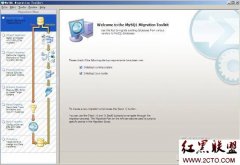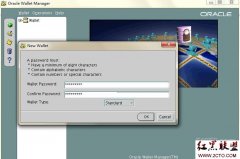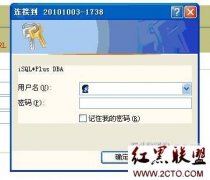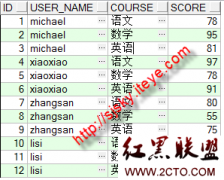查看Oracle当前用户下的信息
0、表空间
SQL>select username,default_tablespace from user_users;
查看当前用户的角色
SQL>select * from user_role_privs;
查看当前用户的系统权限和表级权限
SQL>select * from user_sys_privs;
SQL>select * from user_tab_privs;
查看用户下所有的表
SQL>select * from user_tables;
1、用户
查看当前用户的缺省表空间
SQL>select username,default_tablespace from user_users;
查看当前用户的角色
SQL>select * from user_role_privs;
查看当前用户的系统权限和表级权限
SQL>select * from user_sys_privs;
SQL>select * from user_tab_privs;
显示当前会话所具有的权限
SQL>select * from session_privs;
显示指定用户所具有的系统权限
SQL>select * from dba_sys_privs where grantee='GAME';
2、表
查看用户下所有的表
SQL>select * from user_tables;
SELECT * FROM ALL_TABLES;
查看名称包含log字符的表
SQL>select object_name,object_id from user_objects
where instr(object_name,'LOG')>0;
查看某表的创建时间
SQL>select object_name,created from user_objects where object_name=upper('&table_name');
查看某表的大小
SQL>select sum(bytes)/(1024*1024) as "size(M)" from user_segments
where segment_name=upper('&table_name');
查看放在ORACLE的内存区里的表
SQL>select table_name,cache from user_tables where instr(cache,'Y')>0;
3、索引
查看索引个数和类别
SQL>select index_name,index_type,table_name from user_indexes order by table_name;
查看索引被索引的字段
SQL>select * from user_ind_columns where index_name=upper('&index_name');
查看索引的大小
SQL>select sum(bytes)/(1024*1024) as "size(M)" from user_segments
where segment_name=upper('&index_name');
4、序列号
查看序列号,last_number是当前值
SQL>select * from user_sequences;
5、视图
查看视图的名称
SQL>select view_name from user_views;
查看创建视图的select语句
SQL>set view_name,text_length from user_views;
SQL>set long 2000; 说明:可以根据视图的text_length值设定set long 的大小
SQL>select text from user_views where view_name=upper('&view_name');
6、同义词
查看同义词的名称
SQL>select * from user_synonyms;
SELECT * FROM ALL_SYSNONYMS;
7、约束条件
查看某表的约束条件
SQL>select constraint_name, constraint_type,search_condition, r_constraint_name
from user_constraints where table_name = upper('&table_name');
SQL>select c.constraint_name,c.constraint_type,cc.column_name
from user_constraints c,user_cons_columns cc
where c.owner = upper('&table_owner') and c.table_name = upper('&table_name')
and c.owner = cc.owner and c.constraint_name = cc.constraint_name
order by cc.position;
8、存储函数和过程
查看函数和过程的状态
SQL>select object_name,status from user_objects where object_type='FUNCTION';
SQL>select object_name,status from user_objects where object_type='PROCEDURE';
查看函数和过程的源代码
SQL>select text from all_source where owner=user and name=upper('&plsql_name');
作者“阳光风采”
相关新闻>>
- 发表评论
-
- 最新评论 进入详细评论页>>







